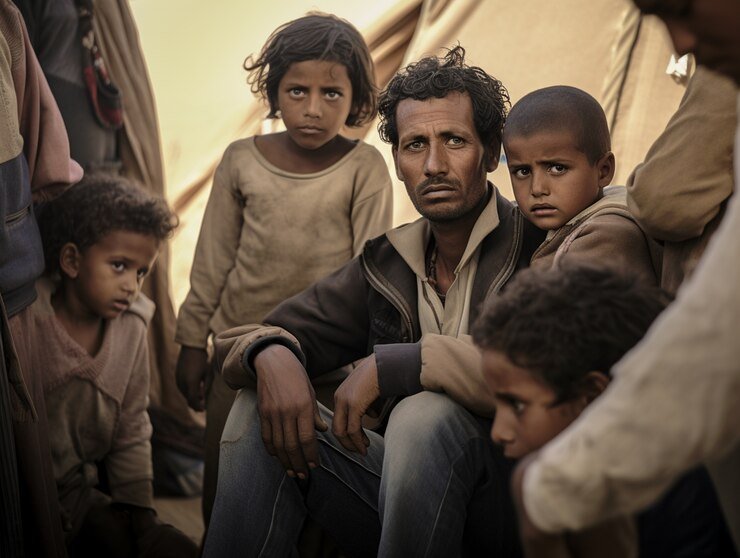Poverty is a pervasive issue that affects millions around the globe. Yet, amid this challenge lies hope in the form of Livelihood Empowerment Against Poverty (LEAP). This innovative approach goes beyond traditional aid and focuses on equipping individuals with skills and resources to uplift their lives sustainably. Imagine communities transforming through self-sufficiency, where families can thrive instead of just surviving. As we delve into the essence of LEAP, we’ll uncover its significance in poverty reduction and explore successful strategies that are making a real difference in people’s lives. Get ready to discover how empowerment can pave the way for lasting change!
The importance of LEAP in poverty reduction
Livelihood Empowerment Against Poverty (LEAP) plays a crucial role in alleviating poverty. By focusing on sustainable economic growth, it empowers individuals and communities to break free from the cycle of dependency.
This approach enhances self-sufficiency. It provides training, resources, and support that enable people to develop skills necessary for stable employment or entrepreneurship. When individuals can earn a living wage, their families benefit too.
Moreover, LEAP fosters community cohesion. As participants work together toward common goals, they build networks that enhance social capital. These connections often lead to shared opportunities and mutual assistance.
Investing in LEAP programs also has far-reaching effects on local economies. A population equipped with skills contributes positively—creating jobs and driving demand for goods and services within their communities.
Such empowerment not only elevates individual lives but transforms entire regions by fostering resilience against economic shocks.
Successful strategies used in LEAP programs
One successful strategy in Livelihood Empowerment Against Poverty programs is skills training. Equipping individuals with marketable skills boosts their employability and fosters self-employment opportunities.
Microfinance initiatives have also made a significant impact. Providing small loans allows families to invest in businesses, enhancing income potential without the burden of high-interest debt.
Moreover, community-based approaches encourage local ownership of projects. When communities participate actively, they can tailor solutions to fit their unique needs.
Partnerships with NGOs can amplify resources and expertise. Collaborating with organizations that understand local dynamics ensures programs are effective and culturally relevant.
Integrating technology offers innovative pathways for growth. Digital platforms can connect entrepreneurs with markets or provide access to vital information on best practices in agriculture or trade.
Case studies of countries implementing successful LEAP programs
Ghana’s Livelihood Empowerment Against Poverty (LEAP) program has become a beacon of success. Launched in 2008, it focuses on cash transfers to extreme poor households, promoting financial independence and dignity. The targeted approach has lifted many out of poverty.
In Bangladesh, the Employment Generation Program for the Poorest (EGPP) mirrors LEAP principles. It offers temporary employment through public works projects while enhancing skills training. This dual strategy empowers communities and fosters self-sufficiency.
Another noteworthy example is Brazil’s Bolsa Familia initiative. By providing direct cash benefits to families that meet certain conditions—like keeping children in school—it addresses both income inequality and educational disparities effectively.
These countries showcase how tailored strategies can enhance livelihood empowerment against poverty, creating meaningful change for those who need it most. Their lessons are invaluable for future initiatives worldwide.
Challenges and limitations of LEAP
Livelihood Empowerment Against Poverty (LEAP) faces several challenges that hinder its effectiveness. One major issue is the lack of adequate funding and resources. Many programs struggle to secure necessary financial support, which limits their reach and impact.
Another challenge lies in community engagement. If local populations are not actively involved, even well-designed initiatives may falter. Resistance or indifference from communities can stall progress and lead to wasted efforts.
Additionally, measuring success poses a significant hurdle. Quantifying outcomes related to empowerment is complex, making it difficult for organizations to evaluate their strategies effectively.
Moreover, socio-political factors often play a role. Instability in regions where LEAP operates can disrupt programs drastically and create uncertainty among beneficiaries.
There’s the risk of dependency on aid rather than fostering self-sufficiency—an outcome that undermines the core goals of LEAP initiatives.
Recommendations for improving and sustaining LEAP initiatives
To improve and sustain livelihood empowerment against poverty initiatives, collaboration is essential. Engaging local communities in the planning and execution of programs fosters ownership and accountability.
Training and capacity-building should also be prioritized. Providing skill development opportunities equips individuals with practical knowledge to enhance their livelihoods effectively.
Integrating technology can further boost LEAP initiatives. Mobile apps or online platforms for resources allow participants to access information quickly.
Monitoring and evaluation systems must be established to track progress. This enables stakeholders to identify successful strategies while addressing challenges promptly.
Financial support mechanisms play a crucial role as well. Microfinancing options empower individuals by providing them access to necessary funds without burdensome conditions.
Fostering partnerships between governments, NGOs, and private sectors can amplify impact through shared resources and expertise.
Conclusion: The future of LEAP in combating poverty worldwide
The future of livelihood empowerment against poverty holds significant promise. As nations grapple with the complexities of poverty, leveraging effective strategies becomes essential. The success stories from various countries demonstrate that targeted interventions can create lasting change.
Innovative programs focusing on skill development and access to resources have shown tangible results. By prioritizing inclusivity and community involvement, these initiatives not only lift individuals out of poverty but also foster sustainable economic growth.
Challenges remain, including funding constraints and political instability in some regions. However, by addressing these issues head-on and refining existing approaches, we can enhance the effectiveness of LEAP strategies worldwide.
With continued commitment from governments, NGOs, and communities alike, the vision for a world free from extreme poverty is within reach. Collaborative efforts are crucial in ensuring that every individual has the opportunity to thrive through empowered livelihoods. Together, we can pave the way for a brighter future where dignity and self-sufficiency are attainable for all.




